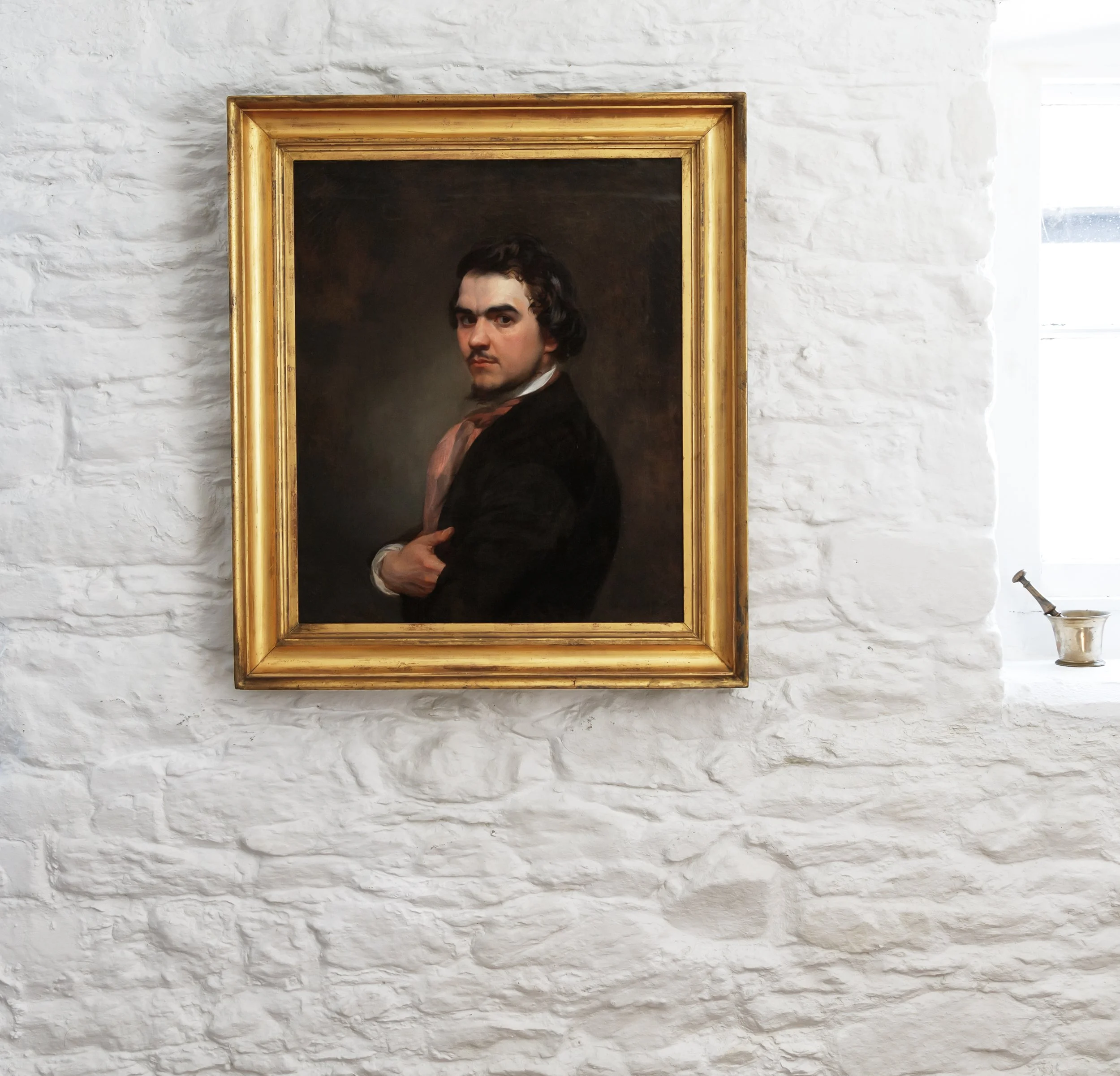Eduardo Cortés y Cordero (1837-1903)
Self Portrait, 1856
Oil on canvas, 76.5 x 63.4cm, (30 x 25”)
Signed and Inscribed: “E. Cortes Paris 1856”
£6000.00
Eduardo Cortés y Cordero (1837-1903) arrived in Paris as a teenager. His uncle, Antonio Cortés (1827-1908), in whose studio he studied, arrived in time for the Universal Exposition of 1855. It is likely that Eduardo Cortés came with him.
In contrast to the Great Exhibition of 1851, which turned enough of a profit to pay for the construction of the Victoria & Albert Museum, the Exposition Universelle made losses in excess of 4.5 million dollars, but cemented Paris’s place as the art capital of the world.
Delacroix contributed 35 paintings, Ingres 40, whilst the great realist Gustave Courbet was barred at the entrance, with the organisers citing a lack of space, thus forcing him to display his pictures in a tent outside the main salon.
It was in this artistic climate that a young Eduardo Cortés y Cordero came to paint himself in 1856. He seems to have taken inspiration from Delacroix’s self-portrait (c1837), though the right hand, on which he presumably depends is folded by his waist, perhaps in reference to earlier masters. It is possible that the portrait marks a coming of age, perhaps it serves as an advert for a young portrait painter outgrowing his uncle’s studio at 4 rue des Dames in the Batignolles District.
By 1866, Cortes’ uncle had moved to the outskirts of Paris and away from the increasingly influential group of painters (Manet, Renoir, Degas, Monet), whose meetings between 1869 and 1875 were altering the direction of western painting.
Though Cortés exhibited at the Paris Salon in 1870, the absence of other portraits from his time in Paris suggest that he struggled for sitters. It is also unfortunate that his return to Seville in 1871 resulted in stiff, provincial portraits, reflecting how youthful energy can often fall to the wishes of paying customers.
Eduardo Cortés y Cordero was born in Seville in 1837 into a family of painters. His great-uncle, Joaquín Cortés (1776-1835) was the director of the Spanish Royal Academy and the driving force behind the Academy of Fine Arts in Seville. As a young man he was tasked with copying the local Murillos, so the originals may be taken to Madrid, though the scheme was aborted just in time for Marshall Soult and the French Army to carry them back to Paris in 1813.
His father Andrés Cortés y Aguilar (1812-1879) painted large, heavily worked genre scenes; we can appreciate their technical skill, though the subjects are perhaps too specific to their time and setting for them to have wider appeal.
Spanish Naming customs
The nature of artistic dictionaries, archives, and online search engines, sees that compact names tend to endure better than long ones.
This is especially true with Spanish artists, whose complex names are generally subject to small errors in spelling and association. This can lead to the artistic contributions of one artists being hopelessly entangled with that of another painter, often even members of the same family.
For the Cortés family, almost 4 generations of painters from Joaquin Cortés in the 18th century to the neo-impressionist Edouard Cortés (1882-1969), it would seem that a mass of similar names and styles has made it difficult for art historians to make sense of their careers. A similar thing happened to the Spanish orientalist Diego Marin Lopez, who signed ‘Marin’ in a near identical manner to Enrique Marin Sevilla and Enrique Marin Higuero, also orientalists and natives of Andalusia.
Some Spanish artists find solutions to this impediment, as in Pablo Ruiz Picasso, who discarded his father’s “Ruiz” for his mother’s “Picasso.” Similarly the poet Federico Garcia Lorca might have struggled to leave a mark writing under the name of “Garcia.”
Self-Portrait in Green Vest - Eugene Delacroix (c1837)
Oil on Canvas, 65 x 54.5cm (Metropolitan Museum, New York)
Eugene Delacroix’s Room at the Exposition Universelle, 1855 - Photography by Andre Adolphe Eugène Disdéri
Bibliothèque nationale de France
A studio at Les Batignolles (1870) - Henri Fantin-Latour
Oil on Canvas, 273.5 x 204cm (Musée d’Orsay, Paris)
Unas naranjas 1872 - Eduardo Cortés y Cordero
Oil on Canvas 31 x 31cm (Prado Museum, Madrid)
Édouard Cortès (1882-1969) (Cousin of the Artist) ,c1905




